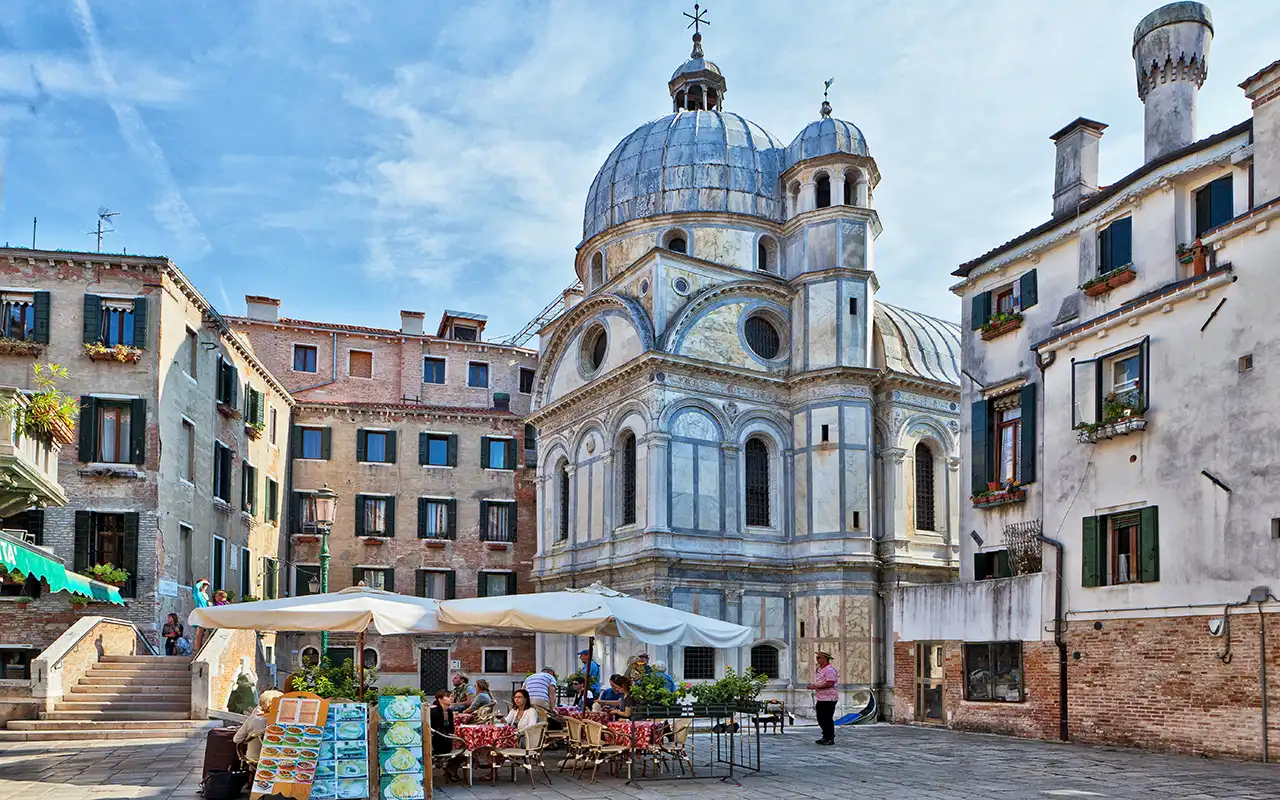Claim to Fame
Cannaregio is Venice’s most authentic and local district — home to the historic Jewish Ghetto and some of the city’s best undiscovered food and culture.
📌 Navigating Cannaregio : Answers to Frequently Asked Questions
- Admission Fee: No admission fee is required to explore the Cannaregio district, but attractions within the district may have their own entrance fees.
- How Long to Visit: Visitors can spend a few hours to a full day in Cannaregio, exploring its diverse attractions, dining options, and scenic views.
- Washrooms: Public washroom facilities in Cannaregio can be found but are not abundant. It's advisable to use facilities in restaurants or public buildings when available.
- Hours of Operation: Cannaregio is accessible at all hours, but shops, restaurants, and attractions have individual operating hours, often closing earlier in the evening.
- Important Information: Cannaregio, known for its serene canals, historic architecture, and vibrant local life, offers a more authentic Venetian experience away from the main tourist areas.
- Handicap Accessible: Cannaregio is largely accessible with flat pathways and bridges, though some areas may have steps or uneven surfaces, typical of Venice's historic districts.
- Pets: Pets are common in Cannaregio, but they should be on a leash. Policies for pets may vary in indoor spaces like restaurants or shops.
- Guided Tours: Guided tours are available, offering insights into Cannaregio's history, architecture, and cultural significance, including its historic Jewish Ghetto.
- Restaurant or Cafe: Cannaregio offers a variety of dining options, from traditional Venetian cuisine to international dishes, catering to a range of tastes and preferences.
- Gift Shop: Shops in Cannaregio range from local artisan boutiques to larger retail stores, offering a variety of goods, from handmade crafts to Venetian glass and textiles.
- Parking: Parking is not available in Cannaregio due to Venice's car-free environment. Visitors typically park on the mainland or at Piazzale Roma and use water transport or walk.
- Family Friendly: Cannaregio is a family-friendly district, offering a mix of historical sites, parks, and waterfront areas suitable for visitors of all ages.
- Photography: Photography is encouraged in Cannaregio, capturing its historic buildings, picturesque canals, and local life. Always be respectful of residents' privacy.
- WIFI: Public WIFI access can vary, with some cafes, restaurants, and public spaces offering connectivity to customers or visitors.
- Picnic Area: While there are no designated picnic areas in Cannaregio, the district's parks and waterfronts provide scenic spots for outdoor meals.
Photos of Cannaregio
Cannaregio is the largest and most populated of Venice’s six sestieri, offering a vivid look at daily life away from the tourist trail. With its laid-back charm, quiet canals, artisan shops, and rich Jewish heritage, Cannaregio blends the city’s history with modern Venetian living. It’s where gondolas glide past laundry lines and locals outnumber visitors.
What to Expect
Cannaregio is full of surprises — from neighborhood bars serving cichetti to peaceful canals perfect for an evening stroll. It’s where you’ll find the historic Jewish Ghetto, elegant palazzos, hidden gardens, and intimate art galleries. The Fondamenta della Misericordia buzzes in the evening with open-air dining and live music, while side alleys remain hushed and residential.
Background and Cultural Context
Historically, Cannaregio was the first area travelers encountered upon arriving by land, and it once hosted grand Renaissance figures like Tintoretto, whose home and church works can still be seen here. It’s also where the Venetian Ghetto was established in 1516, creating a walled neighborhood that became a hub of Jewish intellectual and artistic life.
Today, Cannaregio strikes a rare balance — maintaining a sense of community and heritage while welcoming visitors who seek authenticity.
Best Time to Visit
Cannaregio is wonderful at golden hour — the canals light up and the bars start to fill. Mornings are peaceful and photogenic, while evenings bring life to the fondamentas. Visit in spring or autumn for the best combination of light, temperature, and crowd control.
How to Get There
Vaporetto Lines 1 and 2 stop at various points along Cannaregio, including Guglie, San Marcuola, and Ca' d'Oro. It’s also a 10–15 minute walk from Santa Lucia train station.
Photo Opportunities
Snap reflections in the quiet canals, portraits on quaint bridges, and golden light over the Ghetto. The Ormesini and Misericordia canal fronts are some of the most photogenic in Venice.
Travel Tips
- Try cichetti at neighborhood bacari — they’re cheaper and more authentic than in San Marco.
- Visit the Jewish Museum for a guided tour of the synagogues.
- Wear good shoes — Cannaregio is made for exploring on foot.
FAQs
Is Cannaregio good for staying overnight?
Yes — it's quieter and often more affordable, with plenty of small hotels and guesthouses.
Is it easy to walk to the center from here?
Yes — it’s about a 20-minute scenic walk to Rialto or San Marco.
Can I visit the Jewish Ghetto freely?
Yes — the area is open to walk through, though synagogue interiors require a tour.
Final Thoughts
Cannaregio is where Venice breathes — a place of everyday beauty, slow discovery, and enduring tradition. If you want to feel the real pulse of the city, come here, wander aimlessly, and stay a while.
